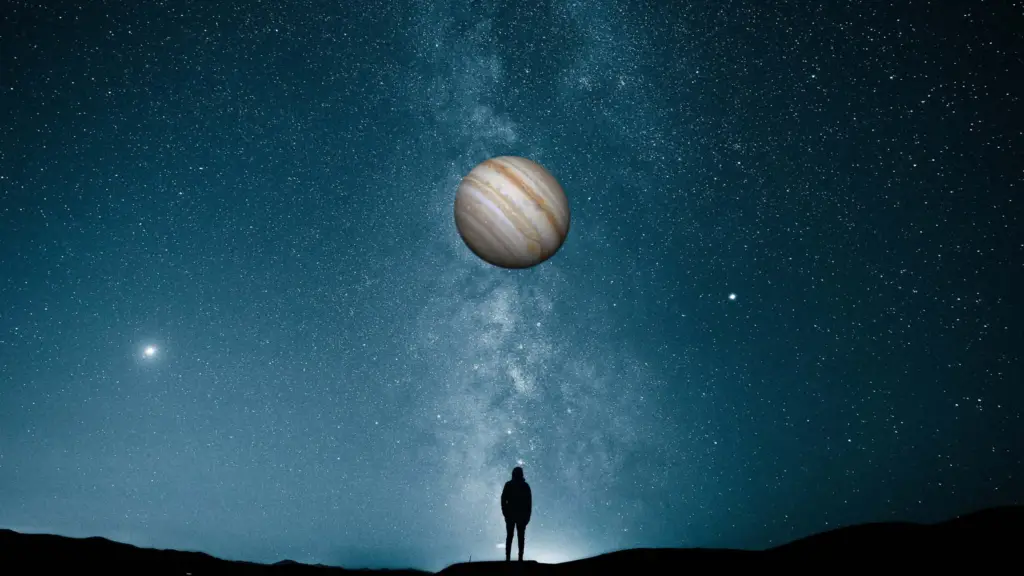NASA reveals that the most massive gas giant will move to its nearest approach to Earth on September 26. This astronomical event is indeed an interesting one, as Jupiter will be making its closest approach to our beautiful planet for 59 years. When the gas giant arrives at this point, it will stay in astronomical opposition to the Sun when viewed from Earth. Astronomers have discovered that Jupiter often makes a close approach to Earth and arranges itself in opposition every 13 months.
However, 2022’s opposition will be a special one, as the giant gas planet will attempt its closest approach. This opposition is possible as Jupiter moves around the sun following an ellipses orbit. Hence, Earth and Jupiter will surely come across each other at a great distance. NASA reveals that during this forthcoming approach, Jupiter will attempt a close approach of around 367 million miles (590 million kilometers) from Earth. When the gas giant is at the farthest distance from Earth, it tends to reach nearly 600 million miles (960 million km) away from our home planet. So, you should endeavor to watch this closest approach using a telescope or binoculars.
When will Jupiter Make its Closest Approach to Earth in 2022?
Astronomers reveal that Jupiter will move to its closest point to earth and stays in an opposition to the sun on September 26. During Jupiter’s last closest approach to Earth in October 1963, sky Gazers were fascinated with its large size and brightness over Earth’s sky. 59 years after this fascinating astronomical event, the gas giant has decided to make another closest approach to our planet. It will be a great astronomical event to watch from your location.
How to Watch Jupiter Make its Closest Approach to Earth?
If you have been fascinated with the existence of Jupiter, this is a great opportunity to catch the best view of the gas giant. NASA has revealed that some of Jupiter’s most interesting features will be viewed from the earth during this forthcoming opposition. However, you will need a sophisticated telescope or binoculars to catch the best view of Jupiter. During this rare opposition, Earth will stand in between the Sun and Jupiter. Astronomers identify this astronomical event when Jupiter moves closer to Earth as Perigee.
During the event, Jupiter will appear more bright and massive in the Earth’s sky. As a skywatcher, you should expect to see its fascinating features including Galilean satellites. If you want to catch a better view of the gas giant, you should find a viewing site that is free from light pollution, dry weather, and highly elevated. However, if you are viewing Jupiter with binoculars, or smaller telescopes, you should expect to see Jupiter in prime position.
However, since ancient astronomers were able to observe the gas giant and its moon using ancient converging lenses, you should be able to catch a better view of the gas giant with modern telescopes and binoculars. Keep in mind that Jupiter has 79 discovered moons, with only 53 officially named. Out of these moons, exist the four largest moons known as Galilean satellites.
These Galilean satellites include Io, Europa, Ganymede, and Callisto, and were named after Galileo Galilei for his significant role in discovering the Jovian system in 1610. During the September 26 opposition, Jupiter Galilean satellites will appear like bright dots to skywatchers observing the gas giant with binoculars or small telescopes. However, the view will appear much clearer to skywatchers using bigger telescopes.
Can watch the Gas Giant Planet Makes its closest approach to Earth with Your Naked eyes?
Yes, it is possible to watch Jupiter without a telescope or binoculars. In fact, before Galileo Galilei popularize the use of a telescope for sky gazing in 1610, ancient astronomers continuously observed the night sky with their naked eyes. However, when you observe the September 26 opposition without a telescope, you will not catch a detailed view of the Jovian system. Observing Jupiter with a telescope or binoculars is a great way to watch astronomical events and enjoy every bit of them.
Conclusion
As Jupiter makes its closest approach to Earth on September 26, you should make out time to catch the best view of the gas giant planet. In fact, if you have been waiting this whole time to capture a detailed view of Jupiter, this is a unique opportunity you should take advantage of. We at future space world hope that you capture the best view of the gas giant and share your sky gazing experience with us.





Could you see it with a 1000 mm lens on a 35mm digital camera?
How high in the sky will it be?